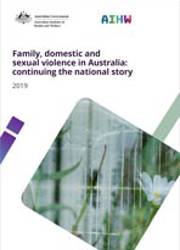Australian Burden of Disease Study, 2015
Latest Year: 2015
Methodology: Uses international best practice methodologies to calculate burden of disease
Geography: National
Purpose/description
The project estimated the amount of burden that could have been avoided in 2015 if no adult women in Australia had been exposed to (current or former) partner violence during their lifetime and no people had experienced child abuse or neglect. It uses methodologies largely consistent with international burden of disease studies.
Scope and coverage
Burden of disease analysis uses a range of studies to produce reliable estimates of the impact of partner violence on diseases for which there is a causal association. These diseases include: depressive disorders, anxiety disorders, early pregnancy loss, homicide and violence (injuries due to assault), suicide and self‑inflicted injuries and alcohol use disorders. The project uses the 2016 ABS Personal Safety Survey data for prevalence estimates.
The burden due to partner violence was estimated only in women as evidence in the literature to inform the causally linked diseases and the amount of increased risk (relative risk) was only available for women and not men. The Australian Burden of Disease Study 2015 also estimated the amount of burden that could have been avoided if no people in Australia were exposed to child abuse and neglect.
FDSV definitions
FDSV is defined as physical and sexual violence by a cohabiting partner, as well as emotional abuse by a cohabiting partner.
For more information, please visit the Australian Burden of Disease Study 2011.



